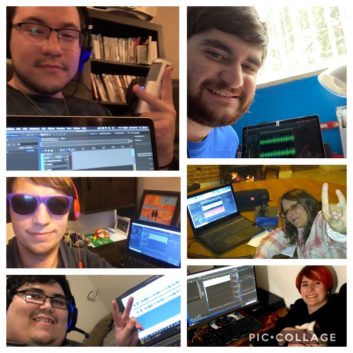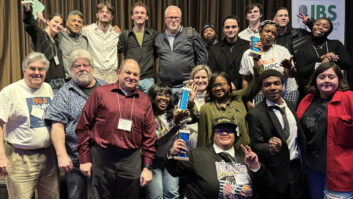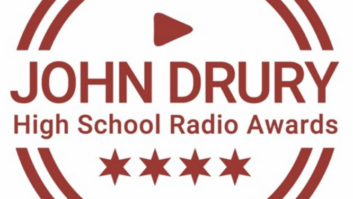While developing Radio World’s new ebook “Broadcasting From Home, Around the Globe,” we asked Jenna Mangino, the station manager of KTSC(FM) Rev 89 at Colorado State University-Pueblo, how she thinks radio operations in the industry will be permanently changed as a result of this health crisis.
I think, going forward, people are realizing how much they can accomplish remotely. For some, the task may take two or three times longer, but as we continue to work remotely, I think it will eventually get easier.
I definitely see remote operations continuing for the future. Radio does not need a lot of space to function. The key to radio’s success as a medium has always been based on our ability to adapt. This pandemic has only emphasized that feature. We can be nimble, figure out solutions on the fly, work on shoestring budgets, develop our own work-around solutions, and the audience has no idea (for the most part) of what it actually took to make the broadcast happen.
Radio is also able to socially distance successfully. For some local stations, the on-air talents have been reduced from a full roster of talent to one or two people working on air for a few hours each day, and then people outside the city track the remainder of the schedule. This is not a new idea; this has been happening in broadcasting for decades.
The confined studio is now exactly what is needed in order to keep air talent safe, so long as the mic, equipment and surfaces are disinfected properly and pop filters are changed frequently. Given the transitions of audio over IP, networking is becoming a vital part of day-to-day radio operations. The combination of a traditional broadcast engineer and computer information systems engineer has shown that radio can operate anywhere, as long as there is bandwidth available and the transmitter is running.
More Collaboration
Doing shows remotely has never been easier. Hosting guests for public affairs shows is easier to schedule as well considering they’re working from home too, and they can adjust their schedule and call in from the comfort of their home.
Future studio designs could include the typical producer-studio separated by glass, but guests could be set up in the producer’s studio so that they maintain social distancing and are protected by the glass window.
 For sales, reporters and talent, they’re showing that they can work remotely in the field or from home. As long as they have adequate equipment and bandwidth, they can meet with clients and close the sale from their home. Sources can be recorded on Zoom, many stations have audio/video sharing agreements so all stations get the same information. There’s more collaboration between stations because everyone is facing furloughs and layoffs, and everyone in media knows what it’s like, so information-sharing and collaboration is at an all-time high.
For sales, reporters and talent, they’re showing that they can work remotely in the field or from home. As long as they have adequate equipment and bandwidth, they can meet with clients and close the sale from their home. Sources can be recorded on Zoom, many stations have audio/video sharing agreements so all stations get the same information. There’s more collaboration between stations because everyone is facing furloughs and layoffs, and everyone in media knows what it’s like, so information-sharing and collaboration is at an all-time high.
The most sobering wake-up call is that station owners are seeing their staff continue to produce excellent work, and ratings are increasing, as everyone is at home and remembering that radio is still free, doesn’t require bandwidth (smart speakers and streaming aside), and is local and reliable. As good as that sounds, it shows owners that if they can hire the right people who can do multiple jobs, the pressure will be on those fortunate enough to land a position in media to do more.
Open work areas are not needed in the future. The overhead of rent and utilities combined with the FCC eliminating the main studio rule will result in more and more employees being encouraged to work remotely. The small investment of some rack-mounted equipment, a RodeCaster coupled with a firewall and a VPN is considerably more affordable than a large empty building with 10 or fewer employees maintaining operations.
In the foreseeable future, I believe there will be more and more freelance opportunities for reporters and talent to fill in across the country for other stations and outlets.
As far as students working in this field, at least for my students, it has shown me how quickly they are able to adapt, be flexible, and persevere to learn new processes, procedures and technology. I think they’ll be more valuable to employers because they were forced to transition immediately and flourished.
The station is using the browser-based Cleanfeed multitrack audio and recording system, allowing students to record multiple voices for sports shows, podcasts, public affairs shows and morning shows. It also uses a custom remote voice tracking system developed by WideOrbit that allows students to submit audio files via Dropbox; students can use their own equipment at home to create voice tracks, drop them into the system and have them inserted into the WO system instantly.
KTSC, a noncommercial student-operated 8,000-watt radio station, has been broadcasting since 1970, and will celebrate its 50th anniversary this fall. It is part of the media communication department at CSU Pueblo and “trains students to work in a pressurized, real-world environment to prepare them for a career in the industry.”












